Parakeet Harness: How to Harness-Train Your Parakeet For Outdoor
Looking for a way to train your parakeet to wear a harness? In this blog we will tell you everything you need to know about Parakeet Harness and how to harness-train your parakeet!
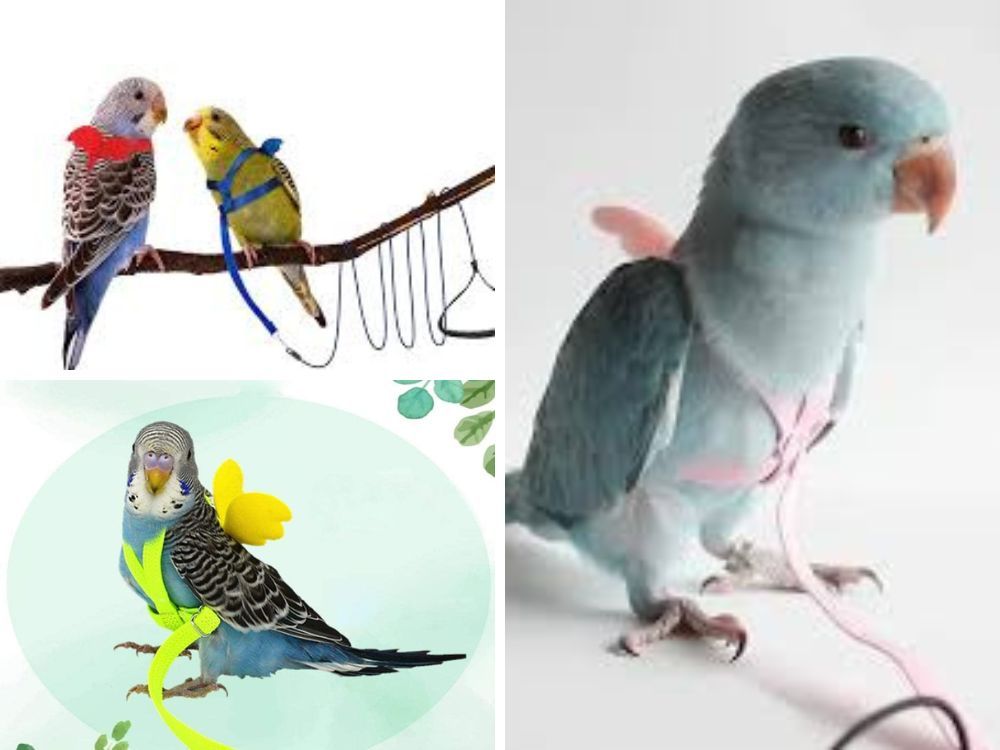
Key Takeaways:
- Understanding the Importance: A parakeet harness ensures your bird’s safety while allowing it to explore the outdoors.
- Step-by-Step Training: Gradual and patient training is crucial for successful harness use.
- Choosing the Right Product: Selecting the right product with features such as comfort, design, and customization options is essential for your parakeet.
Introduction
Harness-training your parakeet can open up a whole new world of experiences for both you and your feathered friend. Whether you have small parakeets, love birds, blue macaws, cockatoos, chickens, or even larger birds like macaws, a harness can provide a safe way for your bird to enjoy the outdoors. Parrot Harnesses are quality products especially designed to allow you to enjoy spending more time with your parrot outside. Each product may offer unique features such as a comfortable design, ease of use, and customization options like engraved names. Harness gives your pet bird a whole new way to experience life. Parrots of various species, including eclectus, can also benefit from harness training, ensuring they get the mental and physical stimulation they need. Harnesses come in many sizes to fit different birds, including X-Small for very small birds. This guide will walk you through the process of harness-training your parakeet, ensuring a smooth and enjoyable experience for both of you.

Why Use an Escape Proof Aviator Harness for Parakeets?
A parakeet harness, such as the Aviator Bird Harness or the aviator harness, is designed to keep your bird safe while allowing it to fly and explore outside its cage. The harness is escape proof, ensuring that your bird remains secure and preventing it from running away or getting hurt while enjoying outdoor activities. Birds like parakeets, cockatiels, and budgies thrive on mental stimulation and physical activity. A harness can provide these benefits without the risk of your bird flying away or getting lost.
The harness sizes are versatile enough to fit various bird species, including medium-sized birds like umbrella cockatoos and Red Fronted Macaws.
Using a harness also helps in building a stronger bond between you and your bird. When your parakeet feels secure and comfortable in its harness, it will be more willing to trust you and engage in outdoor activities. Hundreds of birds and their owners have successfully used these harnesses to enjoy safe outdoor adventures together. This can lead to a happier and healthier bird, as well as a more fulfilling relationship for both of you.
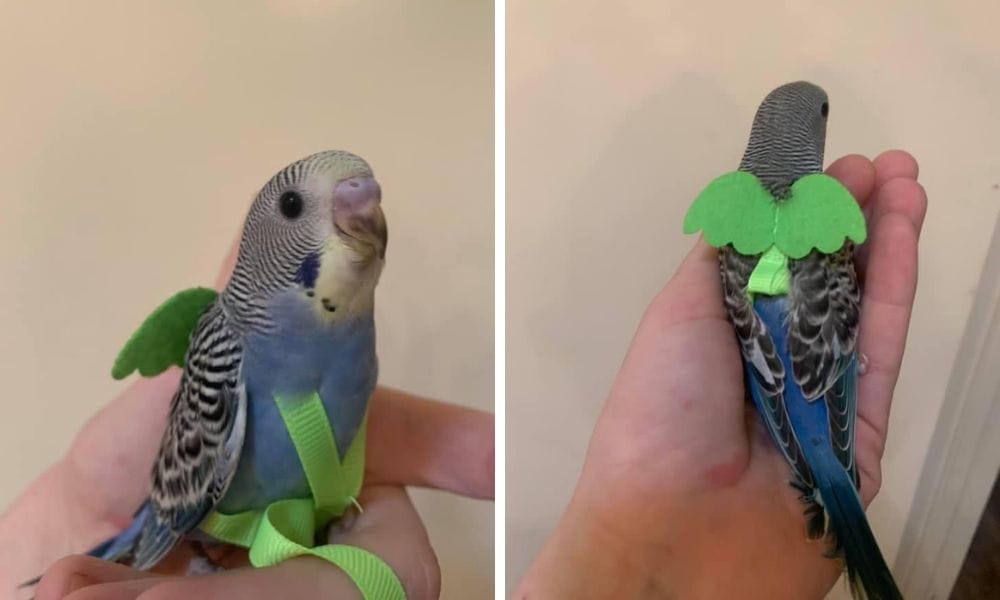
Choosing the Right Harness for Small Parakeets
Selecting the right harness for your parakeet is crucial, and the aviator harness is a popular choice due to its lightweight design and secure fit. It’s important to choose a harness that is specifically designed for small birds like parakeets, love birds, and budgies. This harness is also suitable for other bird species, including small cockatoos like Goffins and Major Mitchell. A well-fitted harness will ensure your bird’s comfort and safety. These harnesses come in many sizes to fit different birds.
When choosing a product like a bird harness, consider the material and construction. Look for a harness made from durable, bird-safe materials that won’t irritate your parakeet’s skin. Some products offer customization options such as engraved names or different color choices. The harness should also be easy to put on and take off, as this will make the training process smoother for both you and your bird.

Preparing Your Parakeet for Harness Training
Before you start harness training, it's essential to get your parakeet accustomed to the harness. Begin by placing the harness near your bird's cage so it can see and investigate it. Allow your bird to become familiar with the harness at its own pace, offering treats and positive reinforcement to create a positive association.
Once your parakeet is comfortable with the presence of the harness, you can start introducing it more directly. Gently touch your bird with the harness, rewarding it with treats and praise. This step is crucial in ensuring your bird doesn't become frightened or stressed during the training process.
Step-by-Step Harness Training
- Initial Introduction: Start by placing the harness on your hand and allowing your parakeet to step onto it. This will help your bird get used to the feel of the harness without any pressure.
- Wearing the Harness: Once your bird is comfortable stepping onto the harness, gently place it over your parakeet's head and secure it around its body. Be patient and take your time, offering treats and praise throughout the process.
- Short Sessions: Begin with short training sessions, gradually increasing the duration as your bird becomes more comfortable. Allow your parakeet to wear the harness indoors before venturing outside.
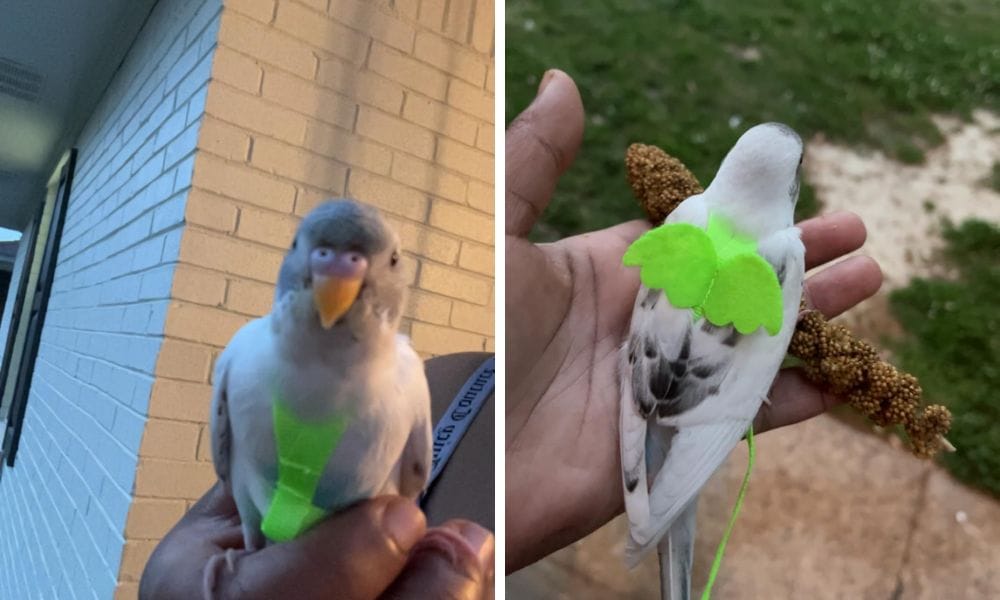
Taking Your Parakeet Outdoors
Once your parakeet is comfortable wearing the harness indoors, you can start taking it outside. Choose a quiet, safe area for your bird's first outdoor experience. Keep the sessions short and gradually increase the time spent outside as your bird becomes more accustomed to the new environment.
Always keep a close eye on your parakeet while it's outside. Birds can be easily startled by loud noises or sudden movements, so it's important to ensure your bird feels safe and secure. Using a leash attached to the harness can provide additional control and prevent your bird from flying away.

Common Challenges and Solutions
Harness training can come with its own set of challenges. Some birds may be more resistant to wearing a harness, while others may take longer to adjust. Patience and consistency are key. If your bird seems stressed or uncomfortable, take a step back and allow it more time to get used to the harness.
Another common challenge is getting the harness on correctly. Practice makes perfect, so don't be discouraged if it takes a few tries to get it right. Watching instructional videos or seeking advice from experienced bird owners can also be helpful.
Benefits of Harness Training
Harness training offers numerous benefits for both you and your parakeet. It allows your bird to experience the outdoors safely, providing mental stimulation and physical exercise. This can lead to a happier, healthier bird with a stronger bond with its owner.
Additionally, harness training can make trips to the vet or other outings less stressful for your bird. A well-trained parakeet will be more comfortable and secure in its harness, making these experiences more manageable for both of you.
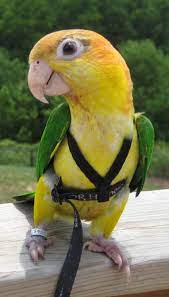
Summary
Harness-training your parakeet can be a rewarding experience that enhances your bird's quality of life. By choosing the right harness, preparing your bird, and following a step-by-step training process, you can ensure a smooth and enjoyable experience for both you and your feathered friend. Remember to be patient and consistent, and always prioritize your bird's comfort and safety.
FAQ
1. How long does it take to harness-train a parakeet?
The time it takes to harness-train a parakeet can vary depending on the bird's personality and previous experiences. Some birds may take to the harness quickly, while others may need several weeks of gradual training. Patience and consistency are key to successful harness training.
2. Can I use a harness on other types of birds?
Yes, harnesses like the Aviator Bird Harness or aviator harness are designed for various bird species, including cockatiels, conures, macaws, and even smaller birds like budgies and love birds. The harness sizes are versatile enough to fit medium-sized birds like umbrella cockatoos, ensuring a secure and comfortable fit. It’s important to choose a harness that fits your bird’s size and species to ensure comfort and safety.
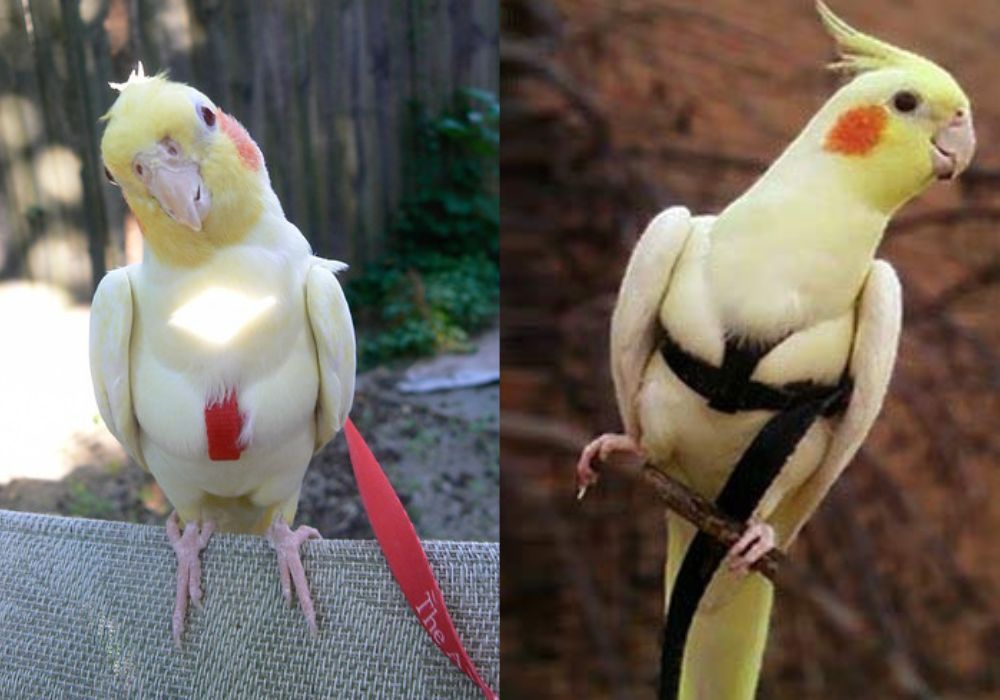
3. What should I do if my parakeet is scared of the harness?
If your parakeet is scared of the harness, take a step back and allow more time for it to get used to the harness's presence. Place the harness near the cage and offer treats and positive reinforcement to create a positive association. Gradually introduce the harness by gently touching your bird with it and rewarding calm behavior. Patience and consistency are crucial in overcoming fear and building trust.
When it comes to finding the perfect harness for your parakeet, you don't want to take any chances. After all, making sure your pet is comfortable and safe should be a priority. Click the link below now to discover a selection of the best harnesses on the market that are suitable for parakeets! With features like adjustable straps and colorful designs, you can choose one that will meet your pet’s needs. Never compromise on quality when it comes to buying a harness for your feathered friend – explore our selection by clicking the link below now!

